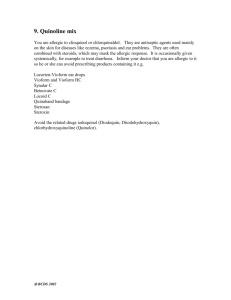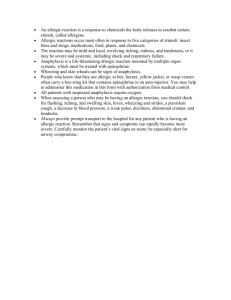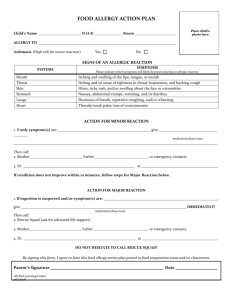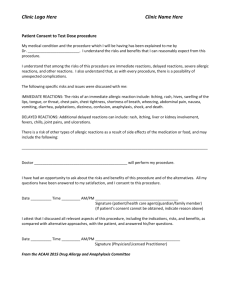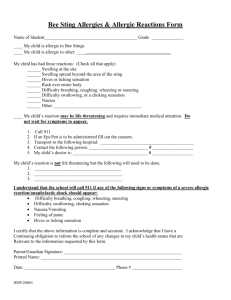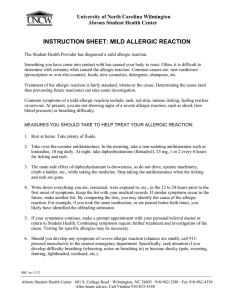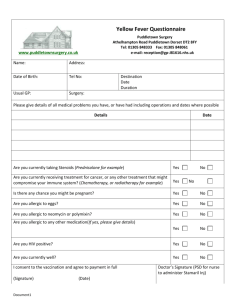University Occupational Health Service
advertisement
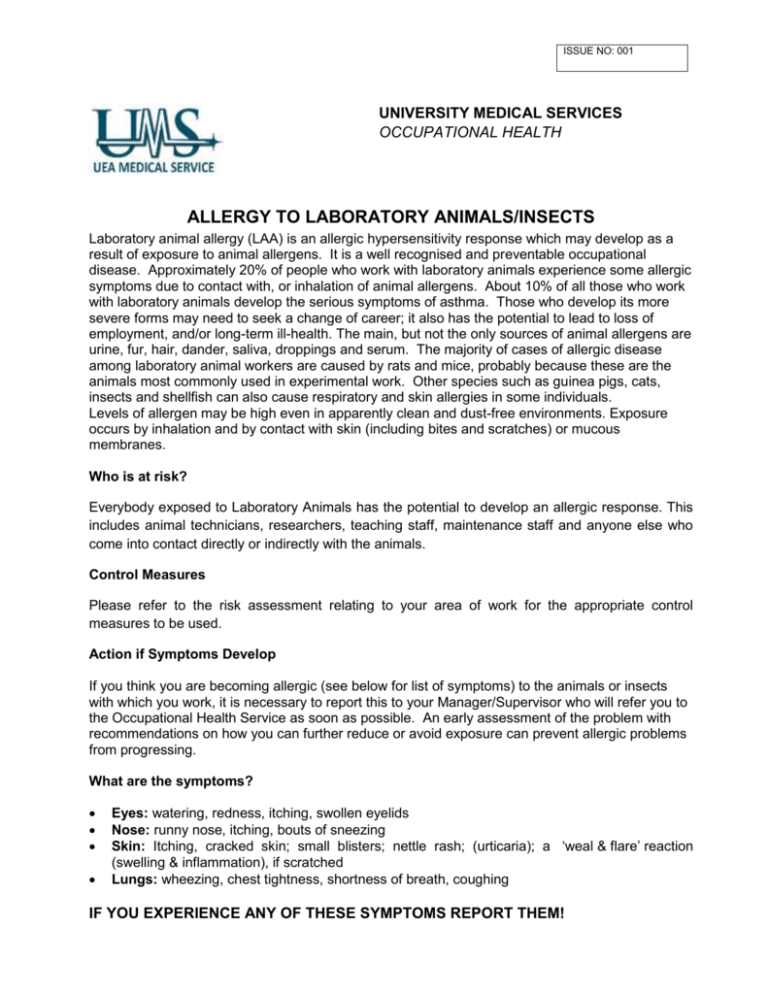
ISSUE NO: 001 UNIVERSITY MEDICAL SERVICES OCCUPATIONAL HEALTH ALLERGY TO LABORATORY ANIMALS/INSECTS Laboratory animal allergy (LAA) is an allergic hypersensitivity response which may develop as a result of exposure to animal allergens. It is a well recognised and preventable occupational disease. Approximately 20% of people who work with laboratory animals experience some allergic symptoms due to contact with, or inhalation of animal allergens. About 10% of all those who work with laboratory animals develop the serious symptoms of asthma. Those who develop its more severe forms may need to seek a change of career; it also has the potential to lead to loss of employment, and/or long-term ill-health. The main, but not the only sources of animal allergens are urine, fur, hair, dander, saliva, droppings and serum. The majority of cases of allergic disease among laboratory animal workers are caused by rats and mice, probably because these are the animals most commonly used in experimental work. Other species such as guinea pigs, cats, insects and shellfish can also cause respiratory and skin allergies in some individuals. Levels of allergen may be high even in apparently clean and dust-free environments. Exposure occurs by inhalation and by contact with skin (including bites and scratches) or mucous membranes. Who is at risk? Everybody exposed to Laboratory Animals has the potential to develop an allergic response. This includes animal technicians, researchers, teaching staff, maintenance staff and anyone else who come into contact directly or indirectly with the animals. Control Measures Please refer to the risk assessment relating to your area of work for the appropriate control measures to be used. Action if Symptoms Develop If you think you are becoming allergic (see below for list of symptoms) to the animals or insects with which you work, it is necessary to report this to your Manager/Supervisor who will refer you to the Occupational Health Service as soon as possible. An early assessment of the problem with recommendations on how you can further reduce or avoid exposure can prevent allergic problems from progressing. What are the symptoms? Eyes: watering, redness, itching, swollen eyelids Nose: runny nose, itching, bouts of sneezing Skin: Itching, cracked skin; small blisters; nettle rash; (urticaria); a ‘weal & flare’ reaction (swelling & inflammation), if scratched Lungs: wheezing, chest tightness, shortness of breath, coughing IF YOU EXPERIENCE ANY OF THESE SYMPTOMS REPORT THEM!

